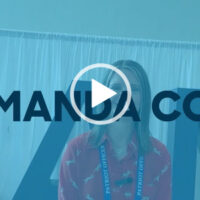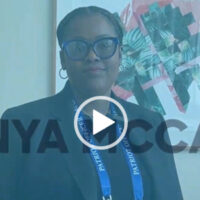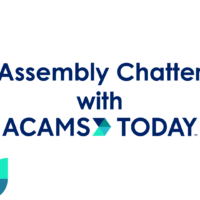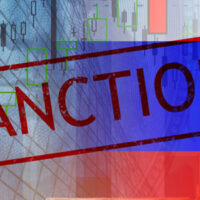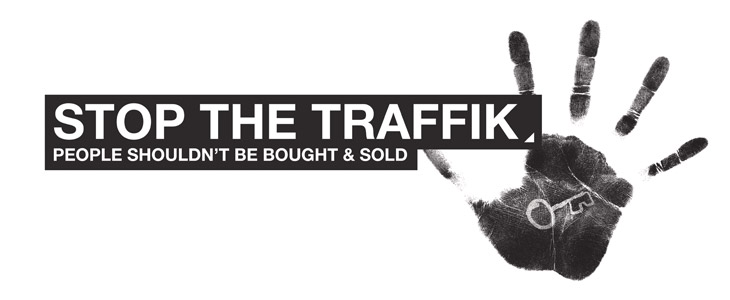
A CAMS Today Europe interviewed Rebekah Lisgarten, director of operations at STOP THE TRAFFIK, to discuss the organisation’s achievements in combatting human trafficking (HT) and emerging HT trends.
STOP THE TRAFFIK is a pioneer in HT prevention that works to unite people from around the world by inspiring, informing, equipping and mobilising communities to know what HT is, how to identify it and how to respond appropriately. Its solutions are grounded in people, technology and collaboration. STOP THE TRAFFIK prides itself on its extensive range of partners, which include non-governmental organisations (NGOs), businesses, governments and law enforcement. Its work is based on trusted relationships and information sharing with partners to build a global picture of HT alongside the Traffik Analysis Hub. This global picture details hotspots and HT trends, allowing the organisation to extract meaningful insights for targeted actions and the prevention of HT in communities around the world. STOP THE TRAFFIK believes HT is an errant economy that recruits vulnerable people for their services and moves the proceeds of crime through financial systems. To address this, and to change the environment to higher risk with lower profit, STOP THE TRAFFIK does the following:
(1) Reduces recruitment by empowering individuals and organisations, making it harder to recruit people into exploitation.
(2) Disrupts money flows by delivering critical information to financial institutions to identify and tackle HT activity.
(3) Reduces the demand by collaborating with businesses to eradicate exploitation from the supply chains.
ACAMS Today: As an innovative organisation for the prevention of HT, what are some of the most vital achievements from STOP THE TRAFFIK?
Rebekah Lisgarten: In global communities, we have reached over eight million people, and can demonstrate change in the communities we have targeted. For example, during the UK’s first lock down, we ran a campaign targeted at Filipino domestic workers and 89% of those reached said they would act differently in a future potential trafficking situation after seeing our campaign.1
We are working in collaboration with numerous businesses on reducing the risk of HT in their supply chain. To date, we have mapped over five billion pounds worth of procurement spent across 15,000 suppliers. Our impact can also be seen in legislation as our influencing work resulted in the supply chain amendment of the UK Modern Slavery Act.2 With this addition, company directors are now responsible for eradicating modern slavery from their supply chains, which strengthens a company’s required response to potential issues of HT.
Another area of vital achievement is our work with financial institutions. We work with them in a multitude of ways: providing specific typologies on what different types of trafficking look like as financial transactions, training branch staff to spot trafficking, and providing bespoke training and intelligence-led insights to anti-money laundering (AML) teams.
Overall success for us is preventing trafficking, and that requires evidencing something that has not happened yet. That is why our continuous monitoring and learning is so important for us. In 2019 we commissioned an independent external evaluation of our model and work. Resoundingly, our approach was endorsed as a unique solution to the global disruption of HT.3 It is a game changer to have a systemic solution proven to reduce HT.
AT: How has STOP THE TRAFFIK built a global cooperation to end HT?
RL: We cannot end HT without collaboration. Unfortunately, HT exists globally, in the hotels we stay in, in the farming of the food that we eat, and the money is often moved in the systems we all use. Therefore, stopping it requires cross-sector systemic collaboration. Our call is to bring people together to stop and prevent trafficking, break down silos, promote information sharing and share our model. We believe in the power of trusted partnership alongside generous and genuine collaboration. We are creating a global, non-competitive movement for everyone to be a part of and we think that is what makes us unique.
It was this deep-set belief in collaboration that led us to co-create the Traffik Analysis Hub4 alongside IBM. It is the first ever global data hub to facilitate information sharing about HT across all industries and sectors. Using pioneering technology and advanced machine learning, it is creating a highly accessible map-based analysis of HT that can be tailored to the specific needs of businesses, financial institutions, communities, NGOs, governments and educational institutions.
AT: HT has become a multi-billion-euro trade in Europe and among those trafficked are minors. How can we help in building awareness in our communities to help abolish HT among minors?
RL: We believe that those who know their situation best are the ones in it, or most at risk. That is why our work is driven by the data of real stories of HT and exploitation. In the UK, there has been a rise in minors being exploited in criminal exploitation and they are often groomed on social media platforms. It is so important to have prevention or support messages on the same platforms and in mediums that appeal to young people. One tool we created that addresses this is the STOP APP.5 It is an anonymous reporting tool that allows people to share their stories and suspicions of HT, helping STOP THE TRAFFIK to tailor our prevention work. It is a unique tool that can put the power to prevent HT in everyone’s hand.
In addition, we can all play a role in building awareness in communities. The possibilities for each person are different; a good first step is understanding how HT happens, how to spot it and how to prevent it. Different actors in communities each have different pieces of the ‘prevention puzzle‘ whether it is data on HT, a different way of doing things, different purchasing habits or raising awareness, and it is when we work together that we can create resilient communities.
AT: What are the latest emerging trends in HT?
RL: The global lockdown and its implications have made it impossible for traffickers to utilise premises and processes that were previously core to their operations. Traffickers are now having to reinvent their model of working. One way they are doing this is by increasing the use of cryptocurrency to avoid making transactions through traditional means, which is more akin to online exploitation. In a world moving online, we are seeing traffickers utilising social media to post exploitation jobs, recruit and groom victims.
Equally, industries such as agriculture, online fast fashion and logistics are seeing an unprecedented boom in the need for their services, which can increase chances for traffickers to take advantage of this demand. Unfortunately, all of this is compounded by many people globally who find themselves with new or exacerbated vulnerabilities due to the pandemic, placing them at risk of HT.
The use of technology for HT is increasing but so too are the technologies used across the sector to address this issue. We are investing in our technological capabilities, using artificial intelligence to assist us in our response and shaping our numerous global prevention projects.
AT: Any additional advice you would like to share on how we can contribute to end HT?
RL: Those working in the AML field, including financial institutions, have a unique advantage over other players to spot HT. The proceeds of HT amount to billions of dollars each year, and they make their way through mainstream financial systems. Learning how it manifests, how it is changing and how to stop it means reducing trafficking and changing the world. Profits are the main motivator for traffickers so dismantling their ability to store, move and spend the proceeds of crime will drastically change the prevalence of the crime.
We know that there is a real power in bringing together global actors from different sectors, and we invite you to join the movement. I would encourage anyone not to underestimate the power they have to change the world. It can be overwhelming when we think like that but if we each do what we can in our own communities, in our roles and lives, then together we can STOP THE TRAFFIK.
Interviewed by: ACAMS Today staff, ACAMS, Miami, FL, USA, editor@acams.org
- “Impact Report,” STOP THE TRAFFIK, https://www.stopthetraffik.org/report/impact-2019-2020/
- “Challenging the Tick Box Approach: A review of the Modern Slavery Act,” STOP THE TRAFFIK, 29 October 2018, https://www.stopthetraffik.org/challenging-the-tick-box-approach-a-review-of-the-modern-slavery-act/
- “Disrupting Human Trafficking,” STOP THE TRAFFIK , December 2019, https://www.stopthetraffik.org/who-we-are/impact/evaluation-2019/
- “Unite. Share. Disrupt human trafficking,” Traffik Analysis Hub , https://www.traffikanalysis.org/
- “The Stop App, A tool to enable people across the world to join the fight against human trafficking and modern slavery,” STOP THE TRAFFIK , https://www.stopthetraffik.org/stopapp/







